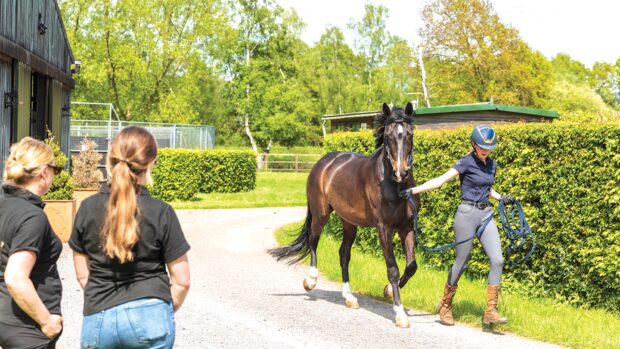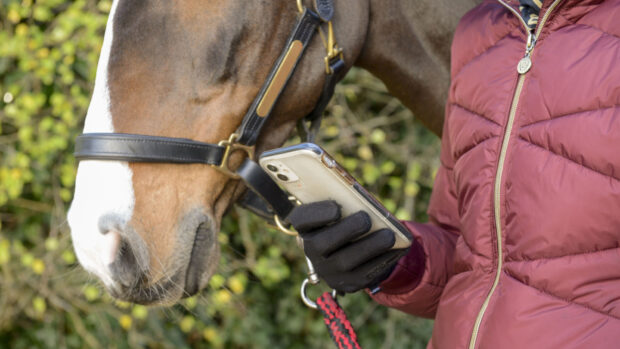If you’re a private owner planning to buy a horse, it’s important to know whether you are buying from a private seller or a dealer as your legal rights will be different in each case. While some owners are more cautious about buying from a dealer, because typically a professional seller’s horses will have not been with them long and so they are less likely to know the horse as well as a private owner would, legally you are in a stronger position if things go wrong than if you are buying privately. In any case, you should find out if the person you are dealing with is the horse’s owner, or if they are working as an agent on behalf of a third party via a sales livery agreement or similar.
Buying a horse from a horse dealer
The Consumer Rights Act 2015 only applies if you are a “consumer” buying a horse from a business seller, most commonly referred to in equestrian terms as a “dealer”, but legally know as a “trader” in this context. While some buyers prefer to avoid buying from professional sellers, buying from a horse dealer can offer you the best legal protection should a sale go wrong.
If you find your new horse has a problem, making him unsuitable for the purpose you bought him, you’re entitled to your money back — even if the horse dealer denies knowledge.
The Act, which applies to all sales between a trader and consumer since 30 September 2015, implies the following conditions of sale — even if the seller writes “sold as seen” or similar in the sales contract or the receipt for the horse.
These are:
1. The horse must be of “satisfactory quality” — for instance, free of defects such as lameness — unless you have prior knowledge and accept the condition.
2. The horse must be “fit for purpose” – whatever the purpose is for which it was generally sold, or any purpose made known at the time of the agreement.
3. He must be “as described” at both the point of sale and when delivered or collected. So if your new eight-year-old horse turns out to be 18, that’s a breach of the Act.
If one or all of these criteria are not met, you may be entitled to a full refund or the difference in value between the horse you thought you were buying and the one you got.
Buying privately
Buying privately is a different matter. The law “caveat emptor” (let the buyer beware) exists.
If the horse has a problem, you must be able to prove the seller knew, or ought to have known, about it in order for you to get a refund. And suing for breach of contract can be difficult, lengthy and costly.
NFU legal/technical adviser, Nicola Cook, says: “If you innocently rely on the vendor’s comments, such as believing the horse to be vice-free when it turns out to weave, then you have the right to your money back, including the full cost of the horse, compensation and other expenses incurred.
“But you have to be able to prove that the seller represented the horse wrongly or inaccurately. In court, that could simply come down to your word against theirs. For this reason, you should get a written representation from the seller when you buy a horse.”
Buyer’s checklist
Minimise the risk of being taken for a ride with Nicola’s checklist:
1. Always take another person with you to act as a witness.
2. Get the horse vetted by your own or an independent horse vet. Tell the equine vet what activities you want the horse for.
3. Try the horse out at least once and watch it being ridden by its current rider. Watch how he responds when being tacked up and in the stable.
4. Face the horse with different scenarios: hack him out alone, in company and in traffic. If it’s important he can jump, try him out over fences and coloured poles. Also, it’s a good idea to see him being loaded.
5. Get something in writing from the vendor that confirms the horse is what they say he is. This helps to avoid confusion and provides some signed evidence to back up your claim in court, should it come to that.
6. Reputable horse dealers will agree in writing to take a horse back if it has a physical or behavioural problem and either refund the purchase price or offer an exchange. Don’t let the horse dealer take the horse back to sell it on your behalf. You, and not the dealer, could find yourself in court by the next owner if you fail to disclose a problem.
7. Ask to have the horse on loan for a week’s trial period to see how he reacts in unfamiliar territory and give you time to make up your mind. You will need to insure the horse first.
8. If there’s a problem, act straight away. The longer you leave it, the more you risk losing your right to a full refund, although you’ll still be able to claim damages.
9. Avoid posting on social media anything that indicates you are satisfied with the horse as this could be used as evidence that the horse was “as described” and of “satisfactory quality” on its arrival, which could weaken your case.
You may also be interested in…

Subscribe to Horse & Hound magazine today – and enjoy unlimited website access all year round
Horse & Hound magazine, out every Thursday, is packed with all the latest news and reports, as well as interviews, specials, nostalgia, vet and training advice. Find how you can enjoy the magazine delivered to your door every week, plus options to upgrade your subscription to access our online service that brings you breaking news and reports as well as other benefits.




